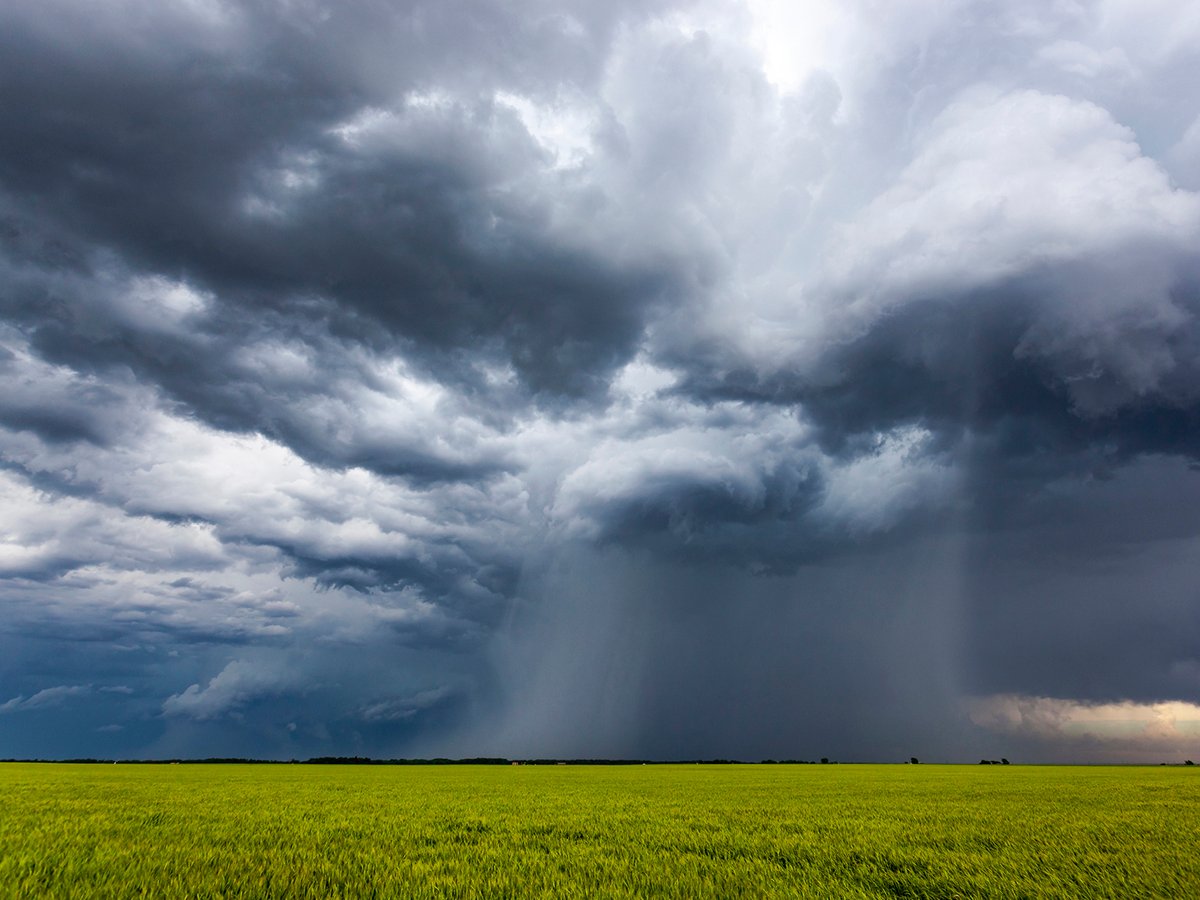A new hay drying system could reduce energy costs while drying more uniformly.
Philippe Savoie, a research scientist with Agriculture Canada at Ste.-Foy, Que., said conventional systems blow air from one direction. That can lead to overdrying of the first layer, making it brittle and unpalatable to cattle.
Overdrying by four percent translates into bales that are lighter and sell for $4-$6 less per tonne.
Savoie said while most farms still dry hay in the fields, some have designed systems to remove excess moisture from wetter baled crops.
Read Also

Extreme rain increases as planet warms
In this issue, we are going to wrap up our look at extreme rainfall by examining the different weather patterns that tend to be associated with these rainfall events.
He and his team created a bi-directional dryer that can dry a single layer of six or, in two layers, 12 mid-size bales, about 0.8 by 0.9 by 2.4 metres in size. Air flows from two sets of control valves installed in two incoming air ducts and in two outgoing air ducts.
“You get more uniform drying without having to move them (bales),” said Savoie.
The floor area of the $185,000 dryer is 2.44 x 4.88 m. It uses a 102 kilowatt propane burner located at the inlet and a 12 kilowatt blower at the outlet of the air duct system that pulls the air under negative pressure.
The side walls are made of plastic film and adhere to bales due to suction.
A recirculation duct returns part of the output air to the inlet just before the burner. That improves thermal efficiency when output air is not saturated with vapour.
Built in 2002 and tested in 2003, the system dried alfalfa and timothy bales to 12 percent moisture from 20 percent in four hours for one layer of bales and 10 hours with two layers.
Bales dried to 12 percent from 25 percent moisture in about 10 hours for one layer and 20 hours with two layers.
Researchers estimated drying hay to 12 percent from 20 cost $4.83 per dry tonne in heat and electricity, and $9.30 per dry tonne for fixed costs like depreciation and interest. The total cost was $14.13 per dry tonne.
Drying bales to 12 percent from 25 is expected to cost $22.32 per tonne because drying times would be greater.
Agriculture Canada is fielding offers to take the test system to a commercial scale.
Like other hay drying systems, it would have to be tailor made to the specific needs of an operation, said Savoie.
At Northern Forage in Nampa, Alta., for example, an in-house designed system dries hay using radio frequencies, working in a vacuum-like environment.
Hay growers will learn more about the latest technologies, production techniques and markets for hay at the Canadian Hay Association’s eighth annual conference in Saskatoon Feb. 5-7.














